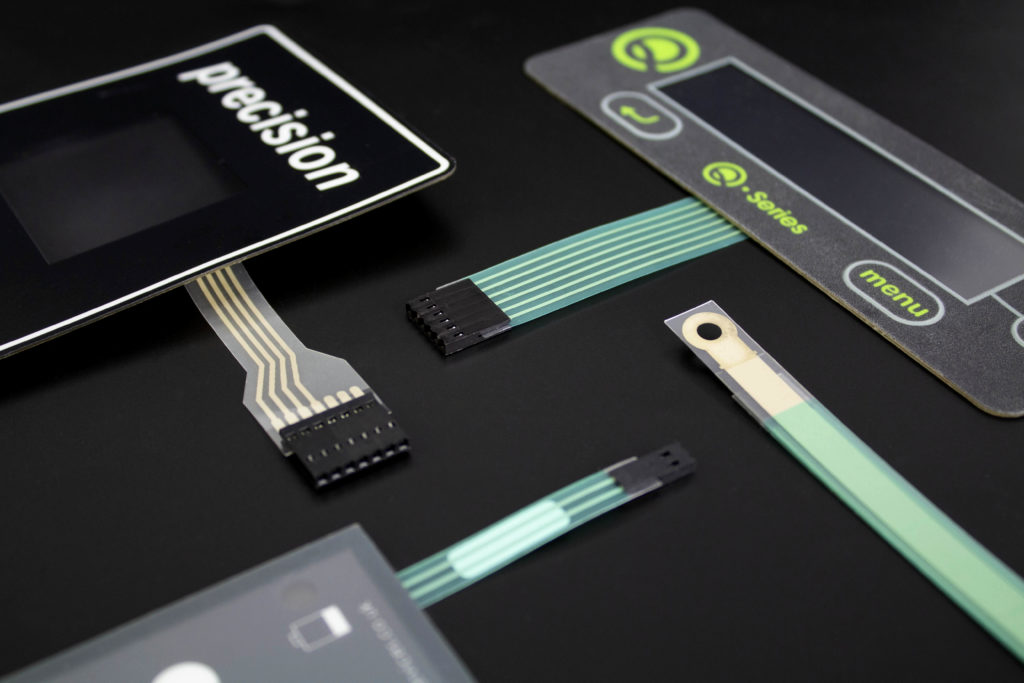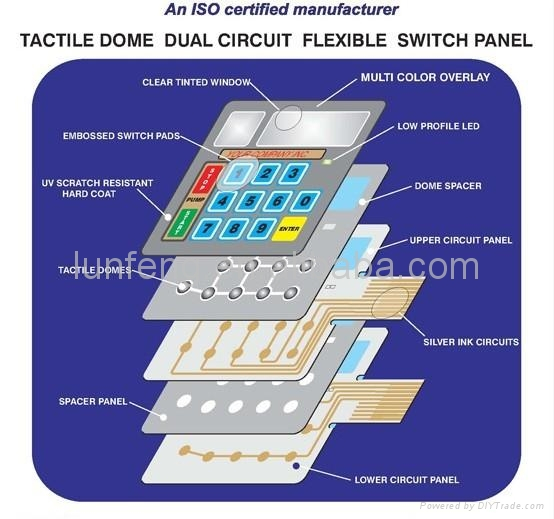Membrane Switches vs. Traditional Switches: What You Need to Know
Membrane Switches vs. Traditional Switches: What You Need to Know
Blog Article
Discover How Membrane Switches Function and Their Function in Modern Electronics
Membrane Switches represent a sophisticated combination of technology and layout within the realm of contemporary electronic devices, offering as necessary user interfaces in numerous tools. Understanding the details of Membrane switch functionality and their more comprehensive effects in boosting customer experience invites more exploration right into their style, advantages, and the innovative advancements shaping their future in technology.
What Are Membrane Switches?

Membrane buttons are distinguished by their durability and resistance to ecological aspects, such as dust, moisture, and severe temperature levels. They can be personalized with different graphics, colors, and tactile comments choices, improving individual experience while keeping aesthetic appeal - membrane switches. The consolidation of published circuits permits for smooth integration into devices, enhancing general performance.
The flexibility of Membrane switches appears in their capacity to sustain both simple and intricate control functions. They can include attributes such as LED signs and touch-sensitive technology, providing to certain user needs. As modern technology continues to progress, Membrane Switches continue to be important for enabling instinctive and reliable interface, therefore playing an essential function in the improvement of contemporary electronic tools.
Parts of Membrane Buttons
Membrane switches are composed of a number of essential components that collaborate to produce a functional and reliable user interface. The main aspects include the graphic overlay, sticky layer, spacer layer, and conductive traces.
The graphic overlay acts as the individual interface, usually printed on an adaptable substratum such as polyester or polycarbonate. This layer not only offers visual allure however additionally consists of tactile feedback, visual cues, and protective features. Underneath the graphic overlay exists the adhesive layer, which protects the button to the tool and makes sure longevity versus environmental tensions.
The spacer layer is essential for keeping the needed void in between the graphic overlay and the circuit layer. This void permits the activation of the button when pressure is applied. The conductive traces, normally made from silver or carbon, develop the electric pathways that complete the circuit when the switch is involved.
Furthermore, a support layer might be consisted of for architectural assistance and insulation. These elements work together seamlessly, making certain that Membrane switches are both resistant and straightforward, making them crucial in he said various modern-day electronic applications.
How Membrane Switches Work
How do Membrane Switches feature effectively within digital tools? Membrane Switches operate on the concepts of pressure-sensitive modern technology, using a split building that consists of graphic overlays, adhesive layers, and conductive aspects.
The design of Membrane buttons is vital for their efficient operation (membrane switches). The layers are meticulously engineered to provide responsive responses, resilience, and resistance to ecological variables such as moisture and dust. The inclusion of domes-- small, raised areas within the button-- boosts responsive action, giving users with a visible click feeling upon activation
Additionally, Membrane switches can be customized in terms of size, form, and graphics, making them appropriate for numerous applications. They are frequently used in control panels, medical devices, and consumer electronic devices due to their streamlined layout and integrity. Overall, the effective functioning of Membrane switches is critical in improving customer communication and ensuring seamless procedure in modern electronic gadgets.

Applications in Modern Gadgets
Using their one-of-a-kind style and performance, Membrane buttons have ended up being indispensable elements in a wide variety of modern-day digital tools. These functional interfaces are employed in consumer electronic devices, industrial tools, clinical gadgets, and auto controls, providing seamless individual communication.
In customer electronics, Membrane buttons are typically found in home appliances like microwaves, washing makers, and other home tools, where they make it check out here possible for user-friendly control with a sleek account. Their low-profile layout assists in combination right into small tools, improving aesthetic appeal without compromising performance.
In commercial applications, Membrane Switches act as control board for equipment, using toughness and resistance to rough atmospheres. Their ability to endure moisture and impurities makes them optimal for usage in manufacturing and processing markets.
Medical devices additionally profit from Membrane buttons, which are developed to be simple to clean and maintain, making sure health in clinical setups. They are frequently used in diagnostic tools, patient tracking systems, and portable medical tools, where integrity is critical.
Benefits of Membrane Buttons
Among the crucial advantages of Membrane buttons is their convenience, which enables them to be tailored for a range of applications throughout multiple industries. These buttons can be made in various forms and dimensions, fitting one-of-a-kind item requirements while giving seamless combination right into devices. Their thin profile enables a portable and sleek design, often enhancing the aesthetic appeal of electronic products.
An additional substantial benefit is their resilience - membrane switches. Membrane buttons are generally resistant to dust, wetness, and chemicals, making them ideal for rough environments. This strength extends their life-span contrasted to conventional mechanical switches, decreasing the requirement for constant replacements
Additionally, Membrane Switches deal cost-effectiveness. The manufacturing procedure includes printing technologies that reduce production costs, specifically for large runs. This cost, combined with low upkeep demands, makes them an attractive choice for makers.

Conclusion
In conclusion, Membrane Switches represent a significant advancement in individual interface technology within modern electronic devices. As the need for durable and intuitive interfaces continues to expand, the duty of Membrane buttons in forming customer experience will most certainly expand.
Membrane Switches stand for an advanced combination of technology and layout within the realm of contemporary electronic devices, serving as crucial interfaces in countless tools.In the realm of modern electronics, Membrane Switches serve as essential components that promote user communication with gadgets. As innovation continues to develop, Membrane Switches remain important for enabling reliable and intuitive user interfaces, therefore playing an essential role in the improvement of modern digital gadgets.
Exactly how do Membrane Switches feature successfully within electronic tools? Generally, the reliable performance of Membrane buttons is pivotal in boosting user communication and making sure smooth operation in modern-day digital read more tools.
Report this page